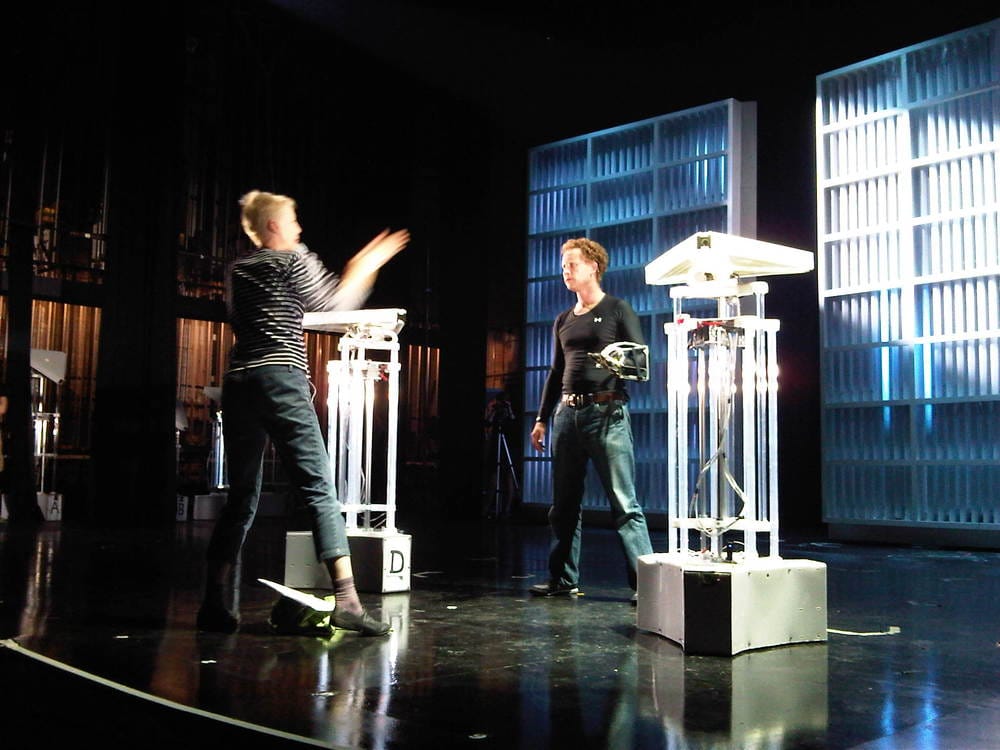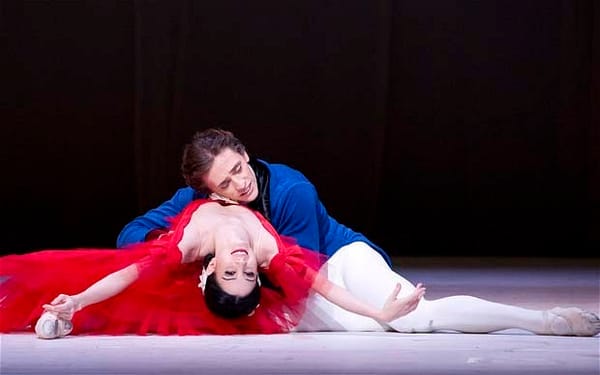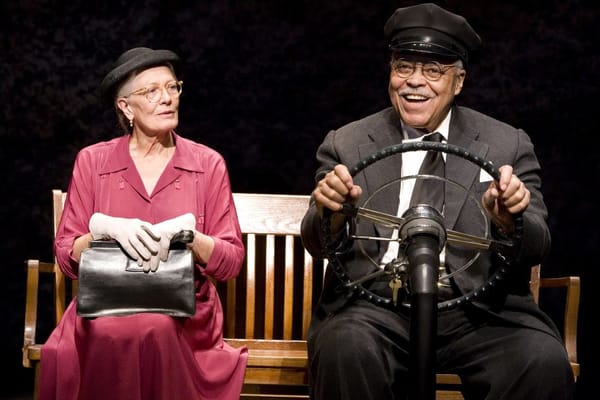Armitage Here?
As Watteau Duets comes to Imperial, Meredith Thomas speaks to its choreographer, original punk ballerina Karole Armitage

Karole Armitage’s limited run of performances at the Southbank Center were billed as science inspired punk-ballet. On the basis of that description alone I realised that my attendance was inevitable. Nothing however could have prepared me for the breathtakingly energetic, shockingly beautiful dance I witnessed. The show featured extracts from Two Theories and Drastic-Classicism both groundbreaking, iconoclastic works from the Director. Armitage’s choreography subverts classical ballet through modern and street influences to create some of the most visceral, thrilling, yet technically immaculate dance I have ever seen.
When I discovered that an Armitage production was scheduled at Imperial College later in the week I grabbed my chance and was kindly offered animpromptu interview after the show.
Meredith Thomas: I understand you have been in this game for a while.
Karole Armitage: I have. I actually I started dancing when I was four. I was first a ballet dancer. I danced with George Balanchine who is kind of the Shakespeare of ballet and with Merce Cunningham who was a very important force in modern dance. During the time I was with Merce Cunningham in the late 70s punk hit and I became very interested in combining punk and raw influences with my masters. I did a piece that became very famous called Drastic-Classicism for guitars and drums with music by Rhys Chatham. It was the first time a real rock, raw-spirit was combined with Ballet refinement and it created a revolution. I think that’s the perfect title for my work to this day... Drastic-Classicism.
MT: Was that an idea that came to you immediately?
KA: It just came. These two kinds of dance were enemies. They were absolute enemies and even to this day there is still a lot of animosity... when I say those two kinds of dance I mean ballet and modern... let alone punk. Ballet and Modern had different philosophies and they did not like each other. But I liked both and I put them together to create a new language of dance and then added in this kind of rock... the raw rock emotional side and that launched my career as a chorographer. Then I worked for people like Madonna and Michael Jackson and I choreographed Hair. But my heart really lies in innovative stage dance.
Armitage’s choreography subverts classical ballet through modern and street influences
MT: I got the feeling form the second half of the performance that you were someone who had been to a lot of punk gigs and knew how tiring and energetic that was.
KA: I did in the late 70s. I was living in New York though I was in London quite frequently at that time. Micheal Clarke was a great friend; actually he was in Drastic-Classicism. We met, we hit it off... he became my partner and we performed together. I was in London a lot and so I went to a lot of Punk gigs here. In New York I went almost every night, although I was dancing all day. I didn’t need sleep I don’t know how really but the energy was just so exciting. I wasn’t trying to imitate punk I was just using it as spice... a flavour.
MT: And that’s the punk side. What about the science...
KA: I have always been interested in science. I think that art always has a kind of scientific discipline to it. For a great painter, the geometry, the way colours work together, the sense of architecture all work together. Those structural things really make the kind of art I like. Because I don’t really like people who just come out and it’s pure self expression; just vomiting their emotions. Who cares what someone feels? What you really want is to see feelings through the prism of some universal sense of pattern, some way of things unfolding so it’s, in some way outside the person.
MT: So you would say that this kind of physics is something that inspired your work or is it something that you read about and then you want to communicate it to other people?
KA: I would say that the spirit of innovation is something I would like to use and communicate to other people. The physics itself is more of an existential meditation. Einstein though the world was so predictable. It’s very interesting that the people who came after him thought it was chaotic and completely unpredictable. The latest innovations in physics are saythat you have to have both in. To me it’s a way of questioning what is reality? What is our experience in life? What is it that makes us tick?
MT: Can you give an example how that has inspired your choreography?
KA: I’m very interested in fractals; the geometry of clouds and mountains and sea-shores. Dance used to be all Euclidean. Vertical and horizontal lines only; all about stability. It was the sovereign image of incredible pomp and prestige. That is ballet’s roots. The new democratic idea is about using things like fractals to make all kinds of curves and final teneity. You have great individuality and yet there is a common purpose so it’s still legible. I’m interested in the way that dance can become as funky and democratic and multidimensional as our way of living and as our knowledge of the universe is now.
MT: The troop you are working with at the moment, are they people you have worked with before?
KA: We are based in New York. We work more than half the year together. I takes a great deal of rehearsal to do this kind of extremely virtuosic, high powered dance and also to allow that much individuality and yet to keep it very articulate.
MT: That idea of characterisations seems quite important. I really felt that you knew the dancers well enough that you could bring out their own character.
KA: That absolutely right. I love that. But behind that there is a very rigorous disciplined structure. Once that is achieved then lots of personality and complete individual personality is allowed to emerge. Every dancer is different and I am not ever trying to create a bunch of robots. Dance used to be everyone in perfect unison. It’s as if you would see birds all flying with their wings going up and down together. It just doesn’t make sense to me.
MT: So the two shows that you had... this is the last one?
KA: This is the last of these two productions. The one we are doing on Friday is called the ‘Watteau Duets’. What we are doing at Imperial College is actually a double duet. It has these two fantastic musicians and these two incredible dancers. It has this riotous portrait of love and destiny. The dancers start out being very interested in each other. It gradually gets very erotic; interest, romance, eroticism, neurosis. In the mean time the musicians are just getting crazier and crazier. They start climbing over their drums and all kind of things are getting out of control. It’s like this force of destiny, the fact that we don’t control out lives and love is unpredictable. It’s a kind of comedy of desires versus reality. It is tied into the V&A museum show Postmodernism: Style and Subversion about the 80s. So I think that’s a really interesting parallel. I work a lot with visual artists. like Jeff Koon and Brice Marten, people who are quite famous. It’s very interesting that this performance ties in with art, music and dance. Then we are going to be at your university. That’s a really nice panorama.
MT: As you going back to the sates after that?
KA: We have been in Moulon for two weeks doing even more productions. We go to Germany next, so we see a little bit more of Europe before we go back to New York.
MT: What is next on the Horizon for you?
KA: I have been asked to work on a Cirque du Soleil project, choreographing acrobats. I am working on a Chinese language rock musical film in Beijing. Then of course things with my company where I am doing quite a few different ideas. I am doing a piece that is hopefully an entertaining look at global warming through ancient fables from around the world. It’s all these animals speaking about power. It’s a thrill to be in London.
Armitage Gone! Dance – The Watteau Duets take place today, Friday October 14 at 7pm, in The Great Hall, Sherfield, Imperial College. Tickets: £12 (£9 concs). See http://www.vam.ac.uk for more information.







